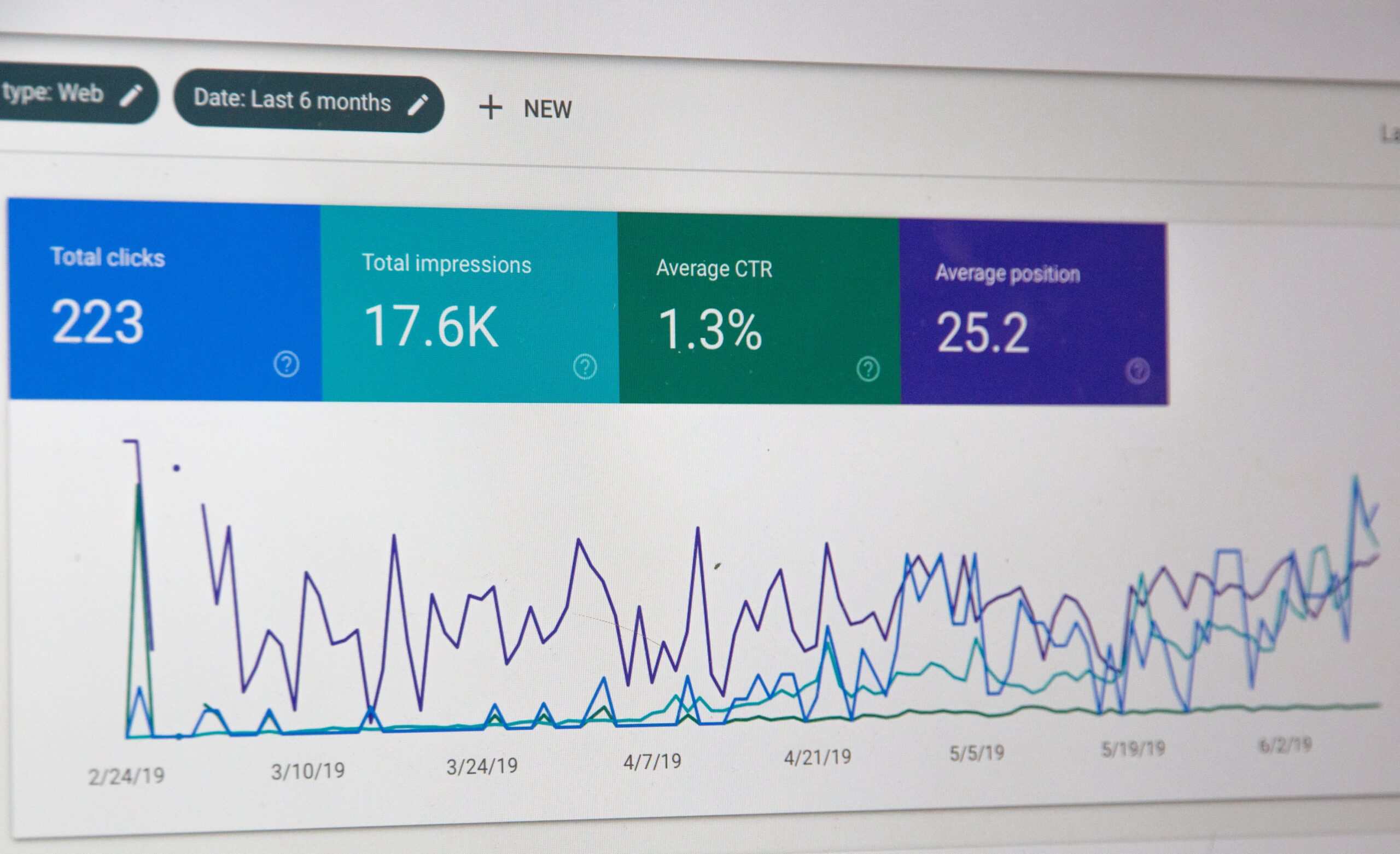- Understanding Closed Loop Marketing
- Advanced Techniques in Closed Loop Marketing
- Application of Closed Loop Advertising
- Insights into Closed-Loop Analysis
- Measuring Success with Closed-Loop Measurement
- An Overview of Closed Loop Marketing
- The Homogeneity Between Closed Loop Marketing and Advertising
Understanding Closed Loop Marketing
A closed-loop marketing strategy involves using data and insights to improve ROI. To optimize lead generation techniques, sales, and marketing teams collaborate continuously. The term “closed loop” refers to the feedback process that occurs as sales teams report to marketing about the outcomes of the leads they receive.
In closed-loop marketing, your marketing and sales teams work together to fully understand what happens to your leads. With this collaborative approach, you are able to identify the most effective lead sources and allocate resources to the most effective marketing channels. Making data-driven decisions that positively impact your ROI can be achieved by analyzing data from various marketing channels.
The closed-loop marketing process typically begins with collecting and analyzing data throughout your marketing efforts. Customer interactions, advertising campaigns, and website analytics can all be gathered from this data. Identifying areas for improvement can be accomplished by establishing a baseline understanding of your marketing performance.
You can further optimize your marketing strategies by tracking data and analyzing results. This may involve adjusting your advertising methods, targeting specific audience segments, or diversifying your marketing channels. You should always base these decisions on the insights gained from your data analysis.
Through ongoing measurement, evaluation, and collaboration, closed-loop marketing allows you to constantly refine your marketing strategies and improve performance. The sales and marketing teams need to be in constant communication and collaboration. As a result, your marketing efforts and their impact on lead generation and conversion become more comprehensive as their feedback is shared.
Remember that closed-loop marketing only happens after some time. This ongoing process requires data-based decisions, collaboration, and continual refinement to remain relevant and practical. Embracing this approach, you will confidently enhance your marketing campaigns and achieve even greater ROIs.
Advanced Techniques in Closed Loop Marketing

In closed-loop marketing, exploring advanced techniques to gain insights and improve your advertising, analysis, and measurement processes is crucial. As a marketing professional, understanding these techniques will empower you to make more informed decisions and drive better campaign results.
Advertising: To maximize the effectiveness of your closed-loop marketing, it’s essential to consider innovative advertising approaches and channels. Combining various marketing channels, such as SEO, email marketing, social media, and content marketing, can attract potential customers and tailor the customer journey. Advanced behavioral or demographic targeting methods can help you reach the right audience at the right time, improving your engagement levels and ROI.
Analysis: Your marketing data is a valuable asset in closed-loop marketing. Advanced analytical tools extract actionable insights from the data collected. Optimize your campaigns by using techniques such as multivariate testing and predictive analytics. To gain insight into which strategies work best for your business, integrate sales and marketing data – from the first touchpoint to the actual conversion.
Measurement: Closed-loop marketing relies on accurate measurement to drive continuous improvement. Advanced measurement techniques involve attributing success to specific marketing efforts, making it easier for you to identify the most impactful strategies and channels. A few methods to consider are:
First-touch attribution: Tracks the first marketing channel a customer encounters before converting, highlighting channels that attract new customers effectively.
Last-touch attribution: Evaluates the last marketing channel that a customer interacted with before converting, illustrating channels that effectively close sales.
Multi-touch attribution: Considers the influence of multiple channels throughout the customer’s journey, giving you a holistic view of their interactions.
You can achieve more fantastic results for your business by incorporating these advanced techniques in your closed-loop marketing strategy. Closed-loop marketing continues to evolve rapidly, so it is essential to always remain confident, knowledgeable, and proactive.
Application of Closed Loop Advertising
In modern marketing, businesses and marketers constantly search for effective strategies to optimize their advertising efforts. One such method is closed-loop advertising. By incorporating emerging trends in this field, you can improve the efficiency of your marketing campaigns.
Emerging Trends in Closed Loop Advertising
One key aspect of closed-loop advertising is using data-driven insights and analysis to refine marketing strategies. You should be able to identify the most effective channels for engaging your target audience by working together in an endless feedback loop between your marketing and sales teams.
Another emerging trend is the rapid use of advanced technologies like artificial intelligence and machine learning algorithms. They are used to analyze vast data sets in a shorter period of time. As a result, your advertising strategy can be adjusted more rapidly and efficiently as patterns and insights are identified more quickly and efficiently than manually.
Cross-channel tracking and attribution are vital components of successful closed-loop advertising. You can better understand the customer journey and identify potential bottlenecks in your marketing efforts by tracking your audience’s interactions across different channels (e.g., social media, email, search, and display).
In summary, enhancing your closed-loop advertising approach with these emerging trends can help you to:
Utilize data-driven insights to refine your marketing strategies
Harness advanced technologies to analyze large amounts of data more efficiently
Incorporate cross-channel tracking and attribution for a more complete understanding of customer behavior
By understanding and implementing these trends in closed-loop advertising, you can better position your brand to succeed in today’s fast-paced marketing landscape.
Insights into Closed-Loop Analysis
Best Practices for Closed-Loop Analysis
Closed-loop marketing combines data and insights from marketing and sales teams to understand their combined efforts’ effectiveness fully. This approach uses closed-loop analysis to improve overall returns on investment (ROI) by using the information gathered. Data-driven decisions that contribute to the success of your business can be made by following a few best practices for closed-loop analysis.
1. Close collaboration between marketing and sales
The foundation of closed-loop analysis is the tight collaboration between marketing and sales teams. Both departments need to share data and work together for the process to be effective. Clear roles and responsibilities for each team member, along with open communication channels, grease the wheels of this process.
2. Accurate tracking of leads throughout their journey
You must employ accurate tracking techniques at each stage to effectively analyze the entire customer journey. This means implementing a customer relationship management (CRM) system capable of tracking lead conversions and attributing them to specific marketing channels.
3. Consistent reporting and analysis
Regularly reviewing and analyzing the collected data forms the basis of insights gained in closed-loop analysis. Ensure you create reports that provide an in-depth look into key performance indicators (KPIs), allowing you to identify trends over time and explore how your marketing efforts are performing.
4. Align your analysis with company goals
When analyzing the data, always keep your company’s overall objectives in mind. This will help you determine which marketing channels and tactics are making the biggest impact and best supporting your organization’s mission.
5. Make data-driven decisions
Lastly, use the insights gleaned from your closed-loop analysis to optimize your marketing campaigns and sales efforts. Focus on channels and strategies that drive the greatest results regarding customer acquisition and long-term revenue generation.
By understanding and implementing these best practices for closed-loop analysis, you will be well on your way to maximizing the effectiveness of your marketing and sales activities, resulting in continued growth and success for your business.
Measuring Success with Closed-Loop Measurement
Closed-loop measurement (CLM) is an advanced technique in marketing that allows you to gauge the success of your advertising campaigns accurately. By leveraging the power of CLM, you can effectively identify the impact of specific marketing activities on sales and determine the improvements you need to make for future campaigns. Let’s understand the benefits and how to use this method in your marketing strategy.
To start with, CLM involves comparing the change in sales of a group exposed to marketing messages to a control group that still needs to be proposed. This way, you can determine the sales lift generated by the specific marketing activity. The process provides you with invaluable insights into the real-world effectiveness of each marketing channel and campaign.
You can make well-informed marketing decisions by using Closed-Loop Measurement since it provides data-driven insights. You can use this information to:
Better allocate marketing resources to the most effective channels
Target specific customer segments for higher returns on investment (ROI)
Continuously optimize and improve your marketing campaigns based on actual results
CLM also helps you understand the offline impact of your online marketing efforts. By measuring customers’ offline activities, such as in-store traffic and post-exposure to your marketing campaigns, you can comprehensively understand the customer journey and make more accurate predictions.
To successfully measure success with Closed-Loop Measurement, it’s vital to pay attention to the following factors:
Properly segment and select control and exposed groups for an accurate comparison
Ensure data cleanliness and consistency to minimize errors and inaccuracies
Track and analyze relevant KPIs and metrics with suitable tools to gain insights into campaign performance
Embedding Closed-Loop Measurement into your marketing strategy requires dedication and attention to detail. When you follow the recommended practices meticulously, you can maximize the effectiveness of your marketing campaigns, boost engagement, and achieve success.
An Overview of Closed Loop Marketing
Closed-loop marketing is a marketing analysis strategy that utilizes data and insights to enhance your return on investment (ROI). The term “closed loop” refers to the continuous feedback loop between sales and marketing teams, where they collaborate to understand and improve lead outcomes.
In closed-loop marketing, you effectively track the customer journey through each marketing funnel stage. This data-driven approach lets you identify the best-performing channels, target customer segments, and successful campaigns. As a result, you can concentrate your marketing efforts on those strategies, generating the highest ROI, leading to more precise targeting and efficient resource allocation.
To implement closed-loop marketing, you need first to ensure seamless integration of your marketing and sales data. This can be achieved by utilizing an appropriate customer relationship management (CRM) system, connecting your marketing data with the sales touchpoints, and measuring the conversion rate at each step.
The next step is establishing clear objectives and KPIs aligning with your overall business goals. As a result, you can make data-driven decisions about your marketing campaigns. You can fine-tune your strategies and make course corrections by regularly monitoring and analyzing these KPIs.
Pay close attention to attribution models once you have the necessary systems in place. Proper attribution ensures you can accurately identify which marketing efforts drive the most conversions and revenue. Leveraging this information, you can optimize your campaigns and advertising strategies.
In summary, closed-loop marketing involves careful planning, data integration, goal setting, and performance monitoring to help you make informed decisions, maximizing your marketing ROI. Adopting this approach can effectively create a targeted and data-driven marketing strategy that delivers consistent and desired results.
The Homogeneity Between Closed Loop Marketing and Advertising
Closed Loop Marketing (CLM) and Closed Loop Advertising have a strong connection, as they both work towards maximizing the return on investment (ROI) and improving overall marketing efficiency. They achieve this by utilizing data and insights to enhance the marketing process. This section will explore how these two concepts interrelate and complement each other.
When implementing closed-loop marketing, you gather valuable data from your marketing campaigns. This data lets you determine which marketing channels are most effective, which customer segments are most helpful, and which strategies are most effective. Thus, your marketing efforts will be more efficient, your decisions better informed, and your targeting improved.
Conversely, closed-loop advertising is largely focused on your advertising campaigns. A CLM can target your advertisements to a specific audience at just the right time because it provides insights into your audience’s behavior. As well as monitoring the effectiveness of your ads, closed-loop advertising helps you make necessary adjustments to improve their performance. Hence, it supports the overall goals of CLM by ensuring your key messages resonate with your target market.
To implement Closed Loop Marketing and Advertising effectively, your marketing and sales teams must work closely together. This collaboration enables you to track the progress of leads and conversions throughout the entire sales funnel, driving efficient and profitable marketing strategies. Furthermore, integrating sales and marketing data in a seamless feedback loop helps you comprehensively understand your customers’ preferences and behaviors.
The benefits of closed-loop marketing and Advertising include optimizing marketing efforts, enhancing customer engagement, and generating higher return on investment. By implementing these techniques, your organization will benefit from a data-driven marketing culture that will continually adapt and evolve to meet changing market demands.
Platforce is the best CRM software for lead generation, order management, sales automation, and task management. Unlike other software, Platforce gives your company all it needs to optimize customer relations and boost customer experience. Try out the Platforce CRM system with a demo or tour now. You can also stay updated on our Youtube and LinkedIn channels.


